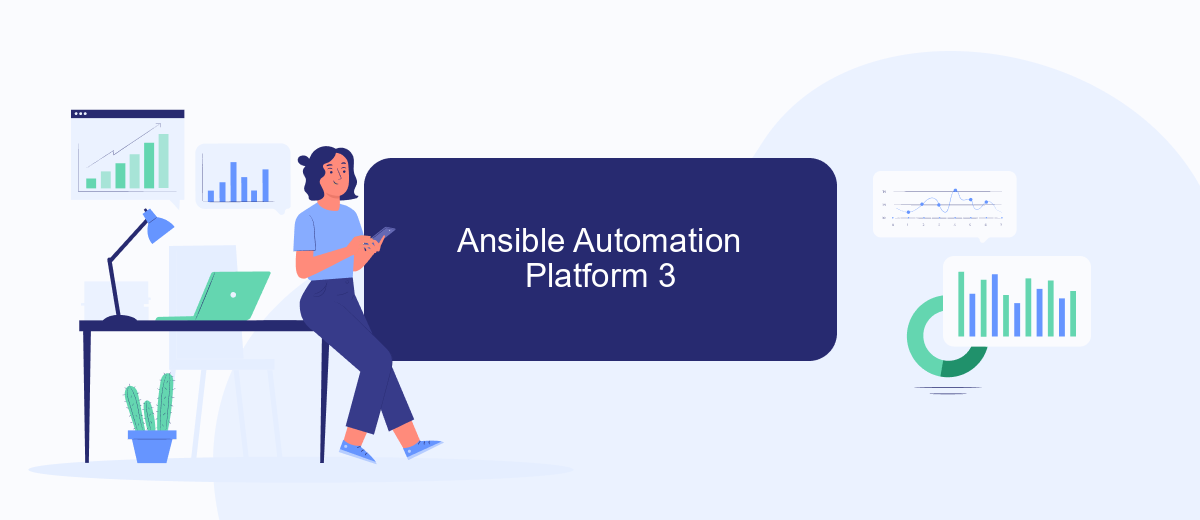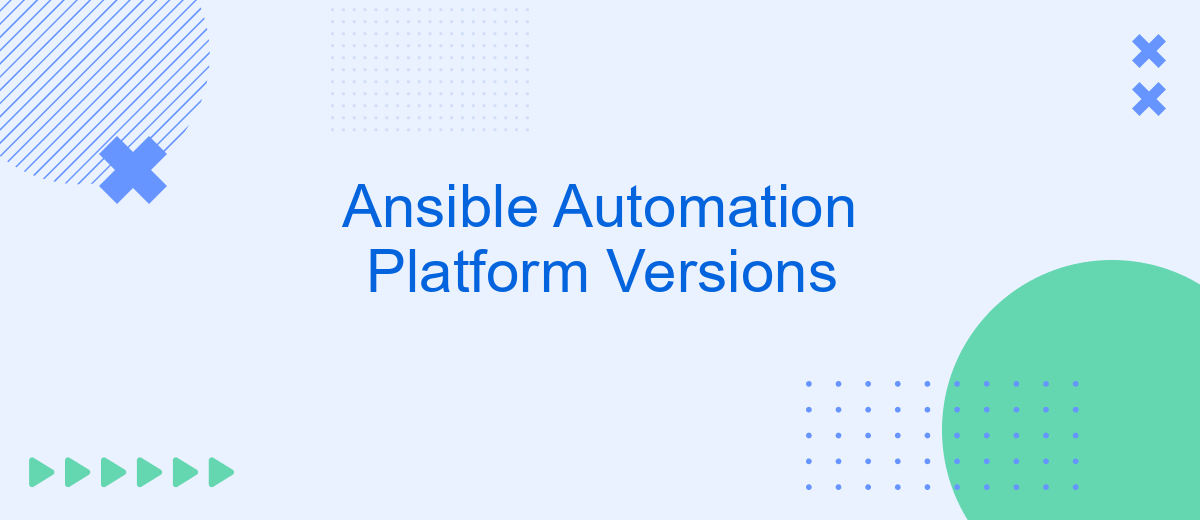The Ansible Automation Platform has become an essential tool for IT professionals seeking to streamline and enhance their automation processes. With its evolving versions, the platform continues to offer robust features and improved functionalities that cater to diverse automation needs. This article explores the different versions of Ansible Automation Platform, highlighting key enhancements and how they contribute to more efficient and effective automation strategies.
Overview
Ansible Automation Platform is a comprehensive suite designed to streamline and enhance IT automation processes. It provides users with powerful tools to automate complex tasks, manage configurations, and orchestrate workflows across diverse environments. With its robust features, Ansible Automation Platform supports organizations in achieving greater efficiency and consistency in their IT operations.
- Comprehensive automation capabilities for managing IT infrastructure.
- Seamless integration with existing IT systems and tools.
- User-friendly interface for creating and managing automation workflows.
- Scalable architecture to accommodate growing automation needs.
- Extensive support for cloud, on-premises, and hybrid environments.
The platform's various versions offer tailored solutions for different organizational needs, ensuring that users can leverage the latest advancements in automation technology. Each version builds upon the previous one, introducing new features and enhancements that align with industry trends and user feedback. As a result, Ansible Automation Platform remains a leading choice for businesses seeking to optimize their IT operations through reliable and efficient automation solutions.
Ansible Automation Platform 2

Ansible Automation Platform 2 represents a significant evolution in IT automation, providing a comprehensive suite of tools to streamline and enhance automation processes. This version introduces a more scalable and flexible architecture, allowing organizations to manage complex deployments with ease. It features an improved automation controller, which enhances the user experience by offering a more intuitive interface and better performance metrics. Additionally, the platform supports a wider range of integrations, enabling seamless connectivity with various IT systems and applications.
One of the standout features of Ansible Automation Platform 2 is its enhanced integration capabilities. By leveraging services like SaveMyLeads, users can automate data transfer and synchronization across different platforms effortlessly. This integration capability reduces manual effort and minimizes errors, ensuring that workflows remain efficient and reliable. Furthermore, the platform's robust security features ensure that all automated processes adhere to the highest standards of data protection. Overall, Ansible Automation Platform 2 empowers organizations to achieve greater efficiency and agility in their IT operations.
Ansible Automation Platform 3

Ansible Automation Platform 3 represents the next evolution in Red Hat's automation suite, offering enhanced capabilities for IT automation across diverse environments. With a focus on scalability and flexibility, this version introduces new features that streamline automation processes and improve operational efficiency. It is designed to meet the demands of modern IT infrastructures, providing tools that facilitate seamless integration and management.
- Enhanced Automation Controller: Improved user interface and expanded capabilities for complex workflows.
- Automation Mesh: A new feature that allows for distributed execution across multiple locations.
- Execution Environments: Containerized automation environments for consistent and scalable execution.
- Content Collections: Pre-packaged modules and plugins for faster deployment and reduced complexity.
- Advanced Analytics: In-depth reporting and insights to optimize automation strategies.
Overall, Ansible Automation Platform 3 is a comprehensive solution that empowers organizations to automate efficiently at scale. Its new features and improvements are tailored to meet the growing complexity of IT landscapes, ensuring that businesses can adapt quickly to changing demands. By leveraging these advancements, organizations can achieve greater productivity, reduce operational costs, and maintain a competitive edge in the digital era.
Ansible Automation Platform 4

Ansible Automation Platform 4 represents a significant evolution in automation, offering enhanced capabilities for managing complex IT environments. This version builds on the strengths of its predecessors while introducing new features designed to streamline automation processes and improve efficiency. With a focus on scalability and flexibility, Ansible Automation Platform 4 is tailored to meet the needs of modern enterprises.
One of the key enhancements in this version is the improved user interface, which offers a more intuitive experience for both new and experienced users. The platform also integrates advanced analytics, providing deeper insights into automation workflows and helping organizations optimize their operations. These improvements are designed to reduce the time and effort required to deploy and manage automation solutions.
- Enhanced user interface for better usability
- Advanced analytics for deeper insights
- Improved scalability for large environments
- Increased flexibility with expanded integrations
The new version also emphasizes security, incorporating features that help protect sensitive data and ensure compliance with industry standards. By offering a comprehensive suite of tools and capabilities, Ansible Automation Platform 4 empowers organizations to automate more effectively, ultimately driving innovation and productivity across their IT operations.
- Automate the work with leads from the Facebook advertising account
- Empower with integrations and instant transfer of leads
- Don't spend money on developers or integrators
- Save time by automating routine tasks
Additional Resources
For those looking to deepen their understanding of Ansible Automation Platform Versions, a variety of resources are available to explore. The official Ansible documentation provides comprehensive guides and tutorials, offering insights into the platform's features and capabilities. Additionally, the Ansible community forum is an excellent place to connect with other users, share experiences, and seek advice on best practices. For hands-on learning, consider enrolling in online courses or attending webinars that focus specifically on Ansible Automation Platform and its various versions.
Integrating Ansible with other tools and platforms can significantly enhance your automation capabilities. Services like SaveMyLeads can streamline this process by automating the transfer of data between Ansible and other applications, ensuring seamless workflows and increased efficiency. For more advanced integration needs, exploring plugins and modules available in the Ansible Galaxy repository can provide additional functionality tailored to your specific requirements. By leveraging these resources, users can maximize the potential of Ansible Automation Platform Versions and achieve more robust automation solutions.
FAQ
What is Ansible Automation Platform?
What are the different versions of Ansible Automation Platform available?
How can I upgrade my Ansible Automation Platform to the latest version?
What are some common use cases for Ansible Automation Platform?
How can I integrate Ansible Automation Platform with other tools and services?
You probably know that the speed of leads processing directly affects the conversion and customer loyalty. Do you want to receive real-time information about new orders from Facebook and Instagram in order to respond to them as quickly as possible? Use the SaveMyLeads online connector. Link your Facebook advertising account to the messenger so that employees receive notifications about new leads. Create an integration with the SMS service so that a welcome message is sent to each new customer. Adding leads to a CRM system, contacts to mailing lists, tasks to project management programs – all this and much more can be automated using SaveMyLeads. Set up integrations, get rid of routine operations and focus on the really important tasks.

